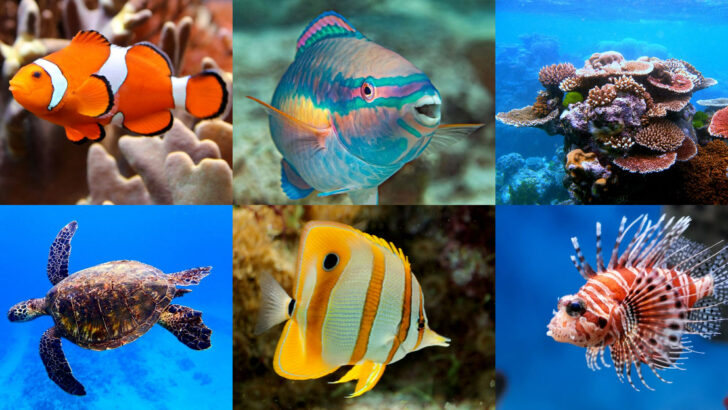Coral reefs are the unsung heroes of the ocean—vibrant, bustling, and full of secrets. These underwater cities are teeming with life, from the tiniest shrimp to the most majestic sea turtles, each playing a part in a delicate, colorful masterpiece.
It’s a place where beauty and survival collide in ways you’d never imagine. Imagine swimming through a world where neon fish dart past, and corals bloom in an array of colors you didn’t know existed.
But there’s more than meets the eye: these reefs are essential to ocean health and our planet’s well-being. Dive deep into the wonders of coral reefs and meet the incredible creatures that make this aquatic kingdom so mesmerizing.
Trust us—this world beneath the waves is far more thrilling than you could ever imagine.
Clownfish
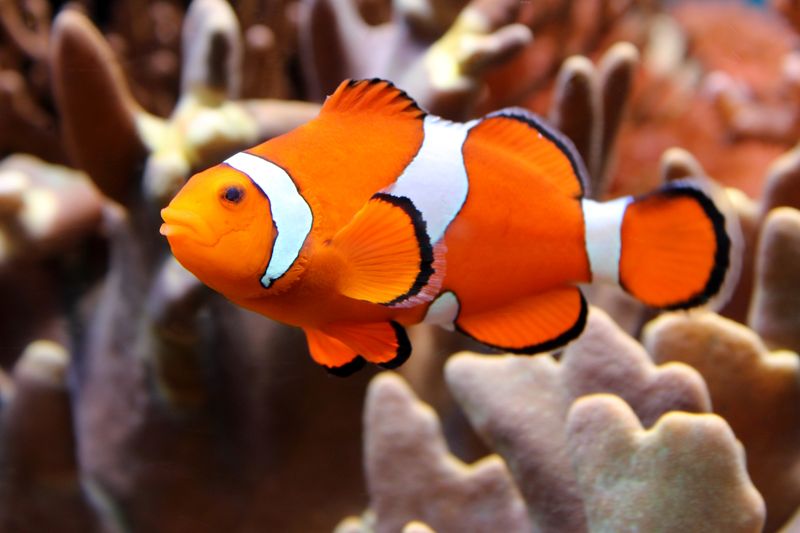
Known for their symbiotic relationship with sea anemones, these fish possess a unique ability to resist the stings of their host’s tentacles. They create a dazzling display of movement and color, bringing life and energy to the reef.
While small in size, they are highly territorial and protective of their homes. Their playful nature and bright colors make them a favorite among divers and marine enthusiasts.
In a world where survival is a constant challenge, these fish show that cooperation can be key to thriving in a complex ecosystem.
Parrotfish
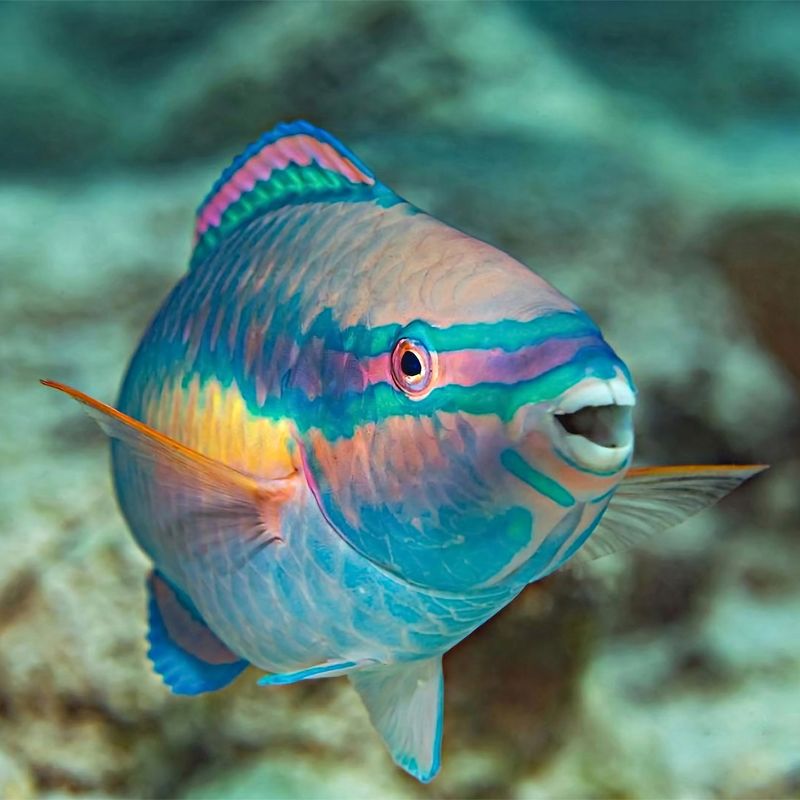
Parrotfish are essential for the health of coral reefs, using their beak-like mouths to graze on algae. This helps prevent algae from suffocating the coral, maintaining a balanced ecosystem.
Their scales shimmer in a spectrum of colors, rivaling a painter’s palette. Every crunch of coral contributes to the creation of sandy beaches, as they excrete the ground-up coral as sand.
Their vibrant presence and ecological importance underscore the interconnectedness of reef life, where each species plays a role in the larger environmental tapestry.
Sea Turtles
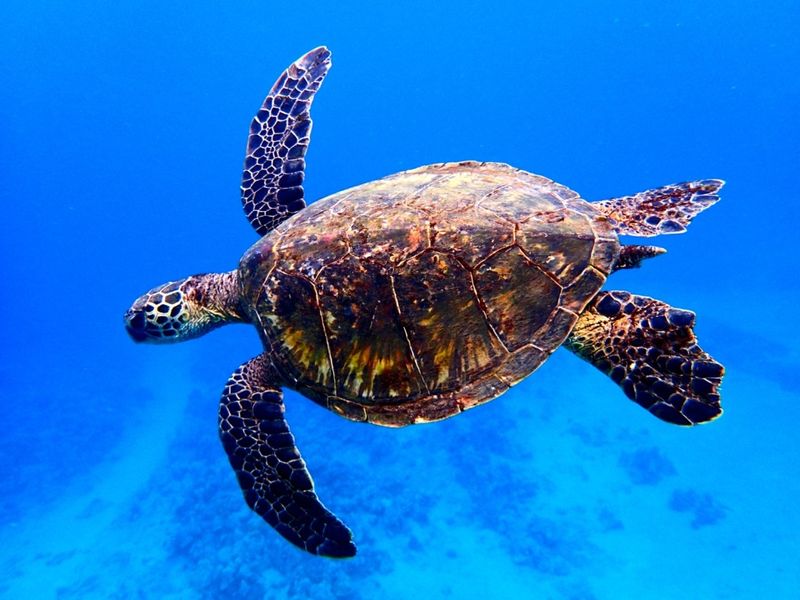
These ancient mariners are often seen gliding calmly over the reefs. Their gentle nature and wise expression have endeared them to many, yet their role extends far beyond being charismatic creatures.
By grazing on seagrasses and algae, they help maintain the balance of these ecosystems. Each species of turtle contributes uniquely to the biodiversity of their habitat.
Their long migrations connect different marine environments, highlighting the interconnectedness of the oceans. Protecting these creatures ensures the continued health of marine ecosystems world over.
Butterflyfish
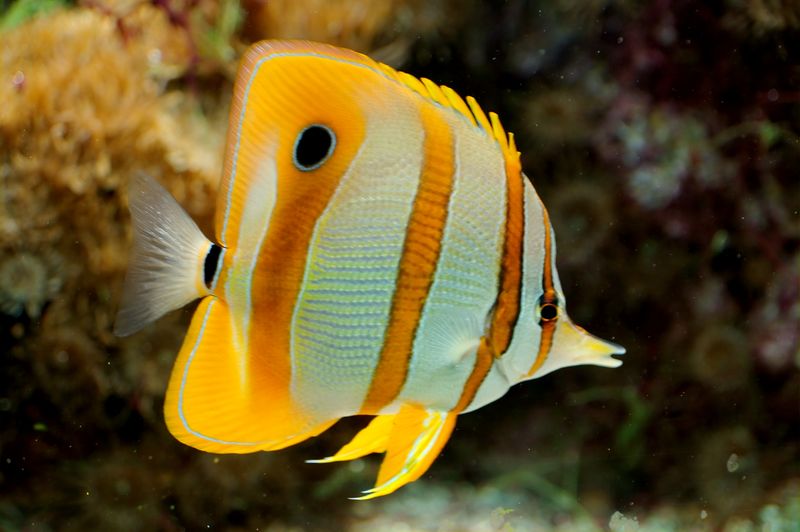
With their elongated bodies and striking patterns, butterflyfish are like living works of art. Their presence adds a touch of elegance and complexity to the coral reefs.
Often found in pairs, they exhibit strong social bonds. Their diet consists mainly of coral polyps and small invertebrates, which influences the coral’s growth patterns.
Observing their interactions offers insights into the social structures of marine life. These fish remind us that beauty and utility often go hand in hand in nature, where aesthetics can also serve a functional purpose.
Giant Clams
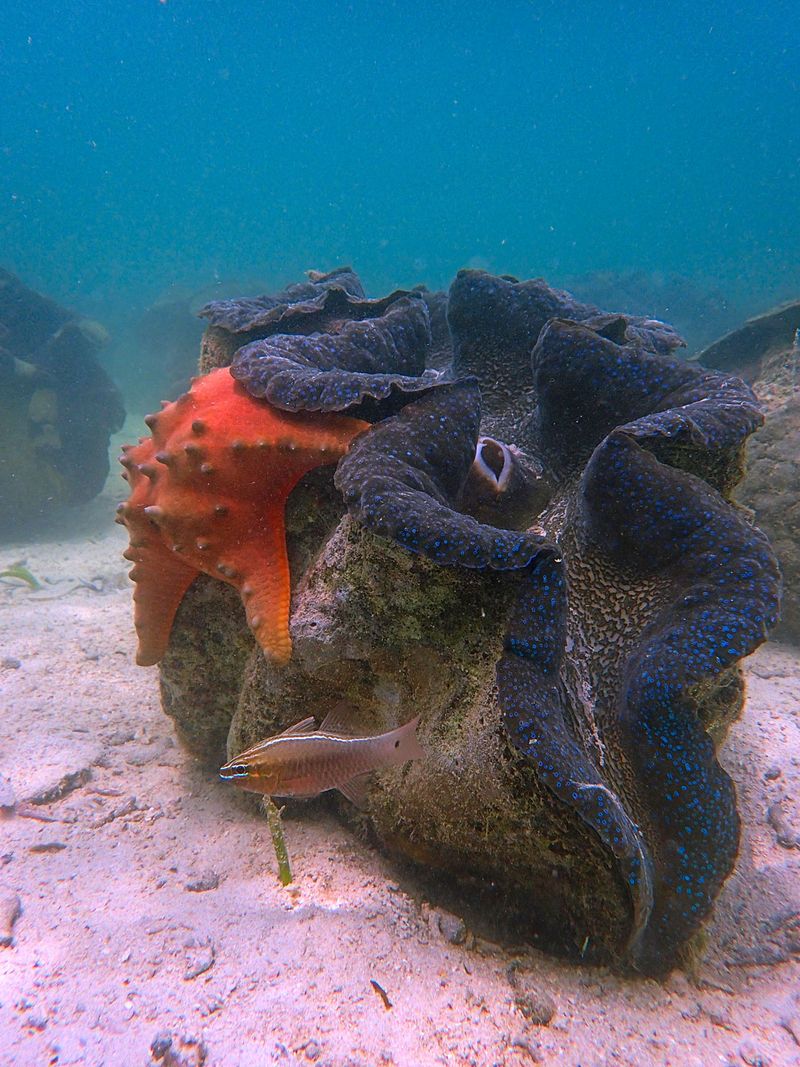
These immense bivalves are more than just a shell; they play a critical role in the reef’s ecosystem. By filtering the water for plankton, they improve water quality and clarity.
Their mantles, with their vibrant hues, provide a stunning contrast to the surrounding corals. They can live for decades, providing habitat and protection for various marine organisms.
As they grow, they contribute to the physical structure of reefs. These living fortresses remind us of the intricate relationships that sustain oceanic health.
Sea Anemones
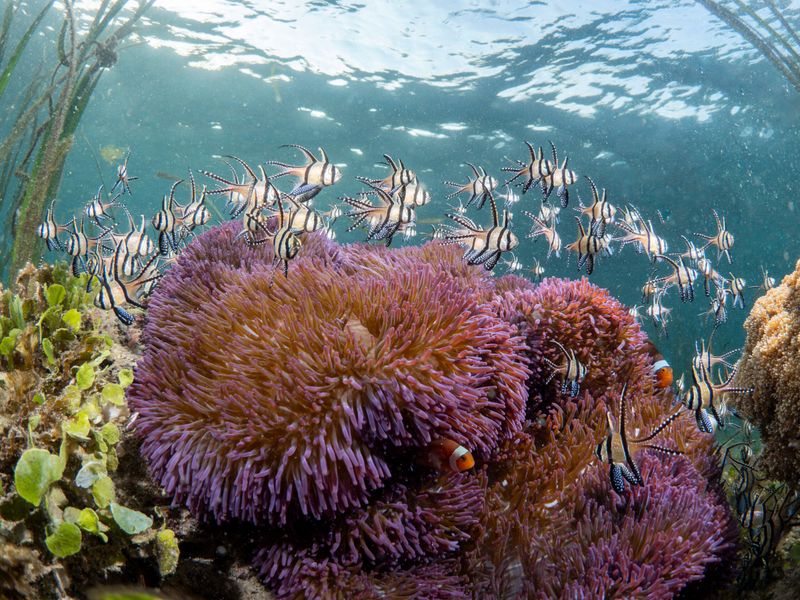
Often mistaken for plants, these creatures are carnivorous animals that play host to many reef inhabitants. Their tentacles contain stinging cells used for capturing prey.
They offer shelter and protection to several fish species, like the famous clownfish. Their presence is integral to the reef’s biodiversity, offering a safe haven within their toxic embrace.
Through their symbiotic relationships, they exemplify the mutual dependencies that characterize the reef ecosystem. These deceptively simple organisms contribute to the reef’s complex web of life.
Lionfish
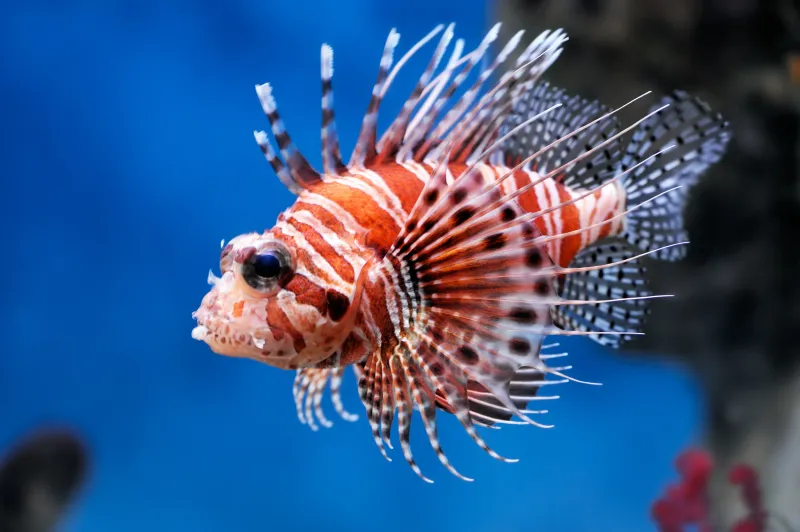
With their dramatic appearance and venomous spines, lionfish are both beautiful and dangerous. They are an invasive species in many areas, posing a threat to native marine life due to their voracious appetites.
Their presence in the coral reefs serves as a reminder of the delicate balance within ecosystems and the impacts of human actions on biodiversity. Efforts to manage their populations highlight the importance of proactive conservation.
Lionfish are a testament to nature’s dual capacity for beauty and peril, emphasizing the need for responsible stewardship of our oceans.
Manta Rays
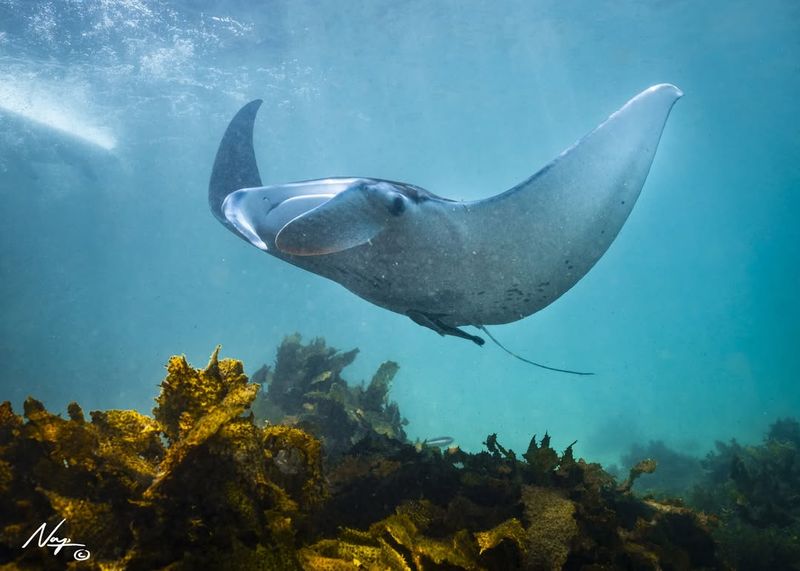
These gentle giants glide through the ocean with grace and majesty. Known for their intelligence and curiosity, they interact with divers and other marine creatures in fascinating ways.
Despite their size, they feed on plankton, filtering vast amounts of water as they swim. Their movements are a ballet in the ocean, a sight that captivates all who witness it.
Protecting these magnificent creatures ensures that they continue to inspire wonder and awe in marine environments. They embody the vastness and mystery of the underwater world.
Moray Eels
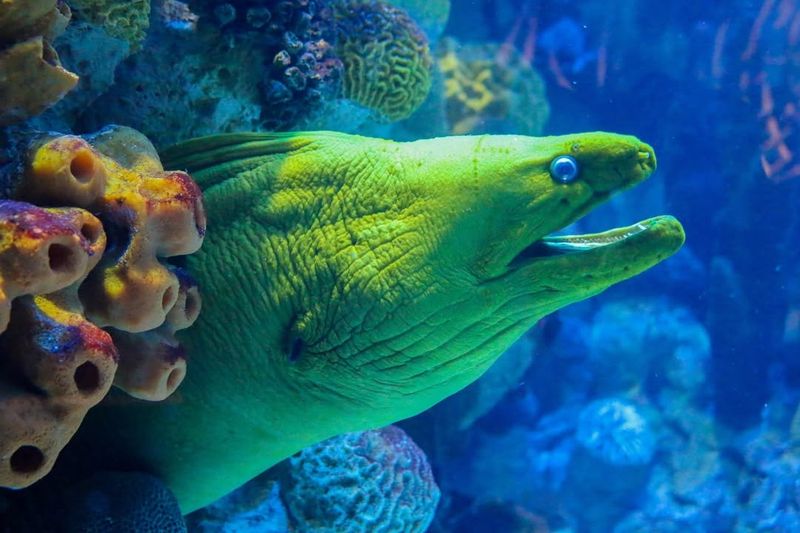
Often hidden within the nooks of coral reefs, moray eels are elusive predators. Their elongated bodies can curl and twist through the tightest spaces, hunting for fish and crustaceans.
With their keen sense of smell, they navigate the labyrinthine underwater world with ease. Observing their hunting strategies offers insights into the complex food web of the reef.
Their presence is a testament to the adaptability and diversity of life beneath the waves. Moray eels add an element of intrigue and excitement to the underwater landscape.
Coral Polyps
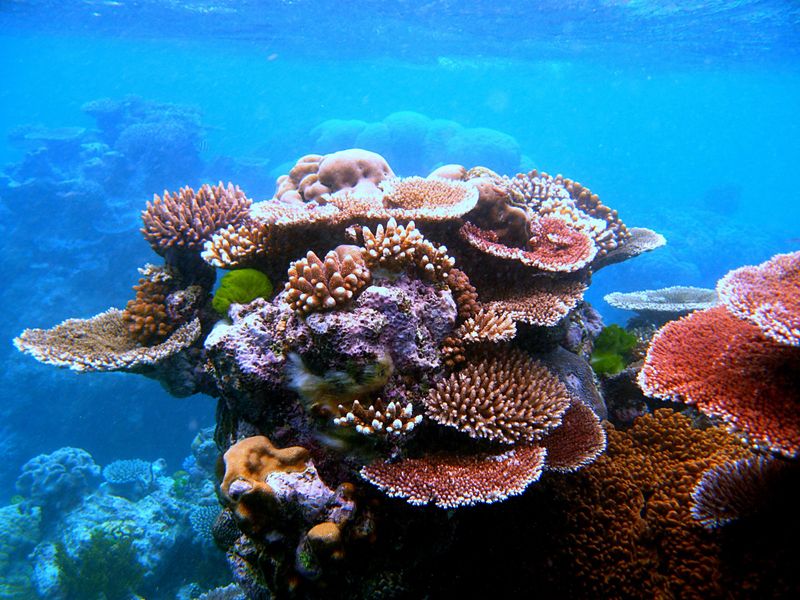
These tiny builders are the architects of coral reefs, secreting calcium carbonate to form their hard exoskeletons. Working collectively, they create vast structures that provide habitat for countless species.
Their vibrant colors are due to a symbiotic relationship with algae, which also aids in energy production. The health of coral polyps is indicative of the overall wellbeing of reef ecosystems.
Their slow yet steady growth reminds us of the enduring nature of natural processes. Protecting these foundational organisms is crucial to preserving the reef’s biodiversity.
Reef Sharks
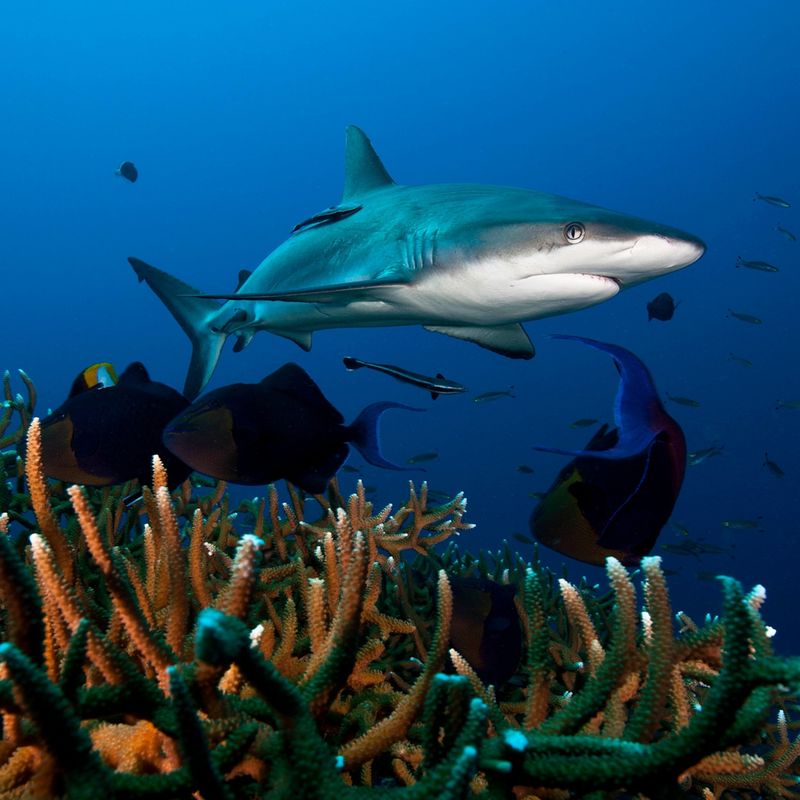
As apex predators, reef sharks play a crucial role in maintaining the balance of marine ecosystems. Their presence indicates a healthy reef, as they regulate species populations.
Observing them in their natural habitat is both thrilling and educational. While often misunderstood, these creatures are essential for the diversity and health of ocean environments.
Their role extends beyond hunting, influencing the behavior and distribution of other species. By protecting them, we ensure the resilience and stability of coral reefs, showcasing the interconnectedness of life in the ocean.
Starfish
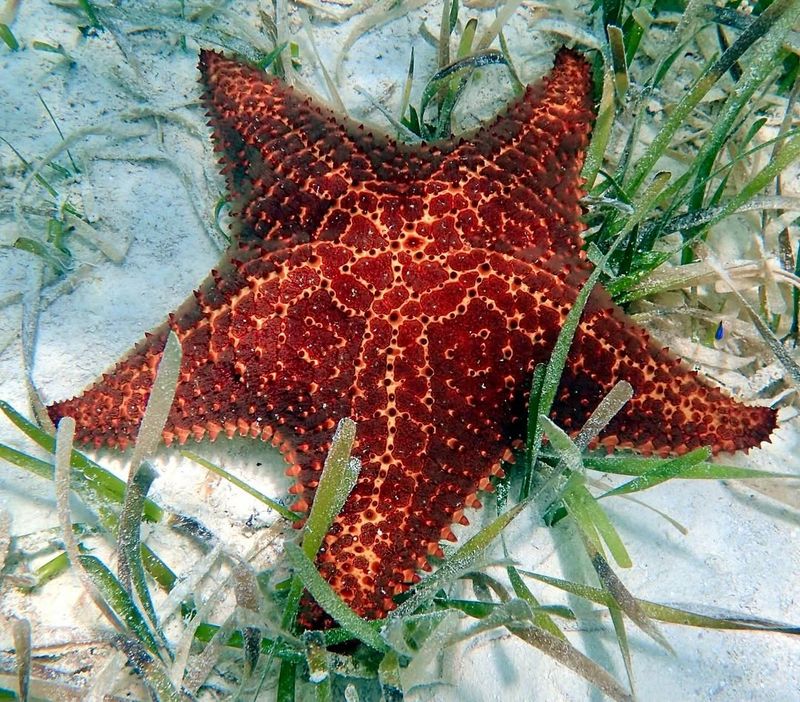
Despite their simple appearance, starfish are vital to the reef’s health. They feed on detritus, algae, and sometimes coral, effectively cleaning the reef.
Their unique ability to regenerate lost limbs makes them fascinating subjects of study. Each species plays a distinct role within the ecosystem, contributing to the rich tapestry of life.
Observing their movement across the ocean floor reveals their adaptability. Starfish show us how even the simplest organisms can have a profound impact on their environment, emphasizing the importance of every creature’s role.
Sea Urchins
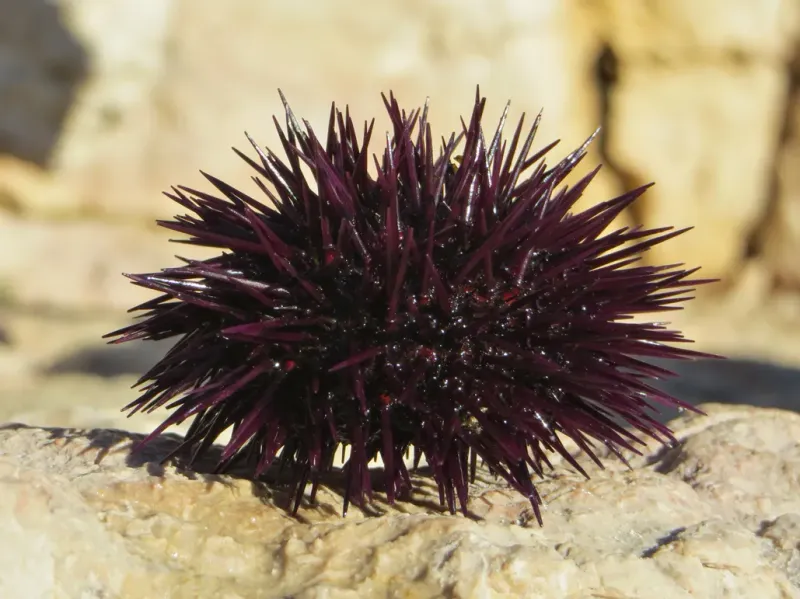
These spiny creatures act as custodians of the coral reef, grazing on algae that could otherwise overwhelm the ecosystem. Their presence is a sign of a balanced reef, where natural checks and balances are in place.
By preventing algae overgrowth, they allow coral and other marine life to flourish. Their unique appearance and ecological role make them interesting subjects for marine study.
Sea urchins remind us of the delicate balance necessary for healthy marine environments, highlighting the importance of each organism in maintaining ecological harmony.
Seahorses
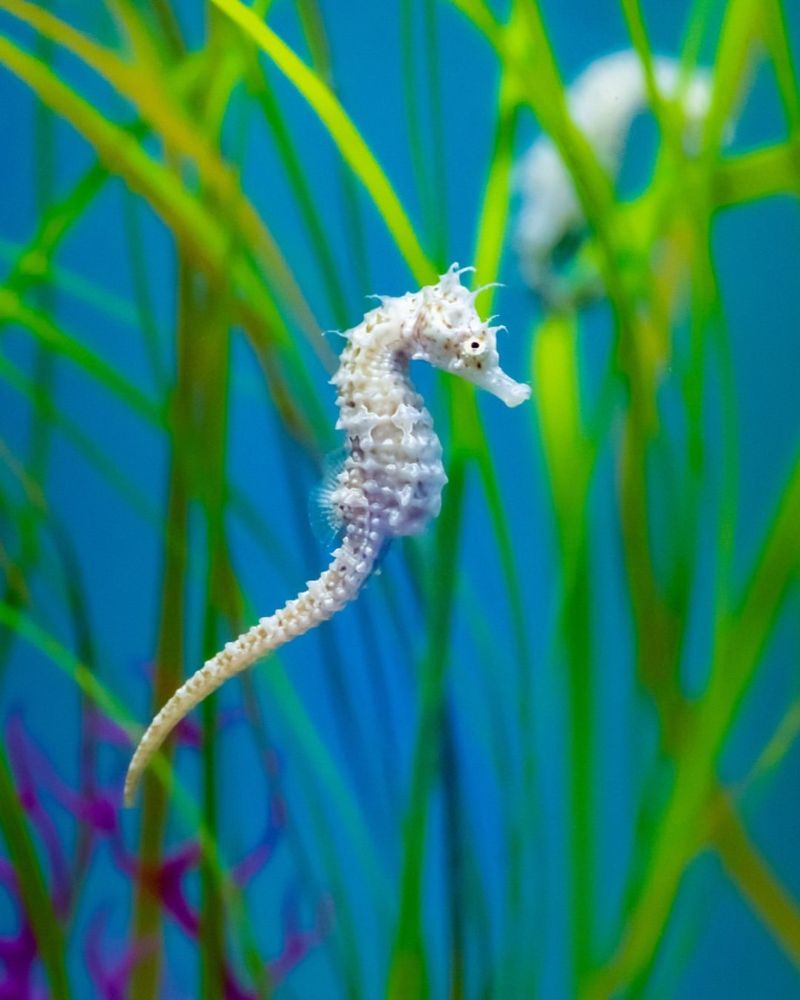
With their whimsical appearance and upright swimming posture, seahorses capture the imagination. These creatures are monogamous, often seen anchored to coral by their prehensile tails.
Their ability to camouflage and their unique reproductive roles make them fascinating marine inhabitants. Males carry the young, showcasing a rare role reversal in parenthood.
Seahorses symbolize the diverse reproductive strategies in the ocean, highlighting the adaptability of marine life. Their presence adds a touch of magic to the reef, showing that the ocean is a place of endless wonder and discovery.

